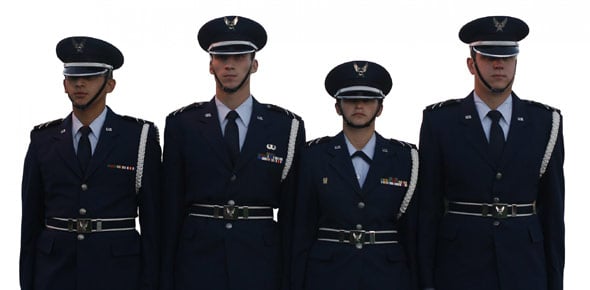What are the two major categories that maintenance management metrics...
What area(s) is/are reported on in SORTS?
As roadmaps, what can maintenance management metrics, if used...
The primary mission of the Maintenance Data System Analysis section is...
What aircraft engine documentation is an AFTO IMT 95 primarily used...
IMDS Central Database is the standard AF base-level automated MIS.
Maintenance cross-tells are used for what purpose?
What level of maintenance is used for complex repairs and is located...
The MESL on a specific unit's aircraft lists the minimum essential...
The average number of deferred discrepancies across the fleet of...
Maintenance requirement is any maintenance event that impacts aircraft...
All units with a USAF PAS code are required to be registered in SORTS.
Which level of maintenance is performed off-equipment at the backshop...
Who is responsible for appointing, in writing, a highly qualified...
An AF civil service employee can act as the POC for an OI?
During the transfer of helicopter blades and tail rotor blades into...
What type of performance indicator shows a problem first, while it is...
A type of broadly worded documents that SAs are based on is...
Within the Programs and Resources flight, the logistics planner can...
In order of increasing capability, what are the three separate levels...
Which section acts as the OPR for maintenance policy guidance in the...
What column on the MESL list all systems and subsystems needed for...
What are the 4 types of evaluations that help QA to accomplish its...
What are two major goals of Intermediate Repair Enhancement Progam...
What MXG agency is tasked with providing technical assistance for DRs?
The average number of sorties or hours flown per Primary Aerospace...
If an aircraft is determined to be safe for flight but can't perform...
As an end user, what is your primary focus in the DR process?
What type of support agreement governs services provided by US...
If a change is made to the printed flying schedule as a result of...
Using equipment generates what type of maintenance?
What are the two basic types of scheduled and unscheduled maintenance?
What combined maintenance approach modifies or eliminates the...
What type of indicator shows firmly established trends?
The Percentage of "Code 3" aircraft repaired to flyable status is set...
To the greatest extent possible, how should maintenance be performed?
Workcenter and shift supervisors are responsible for reviewing data...
The percentage rate of aircraft that land in "Code 3" status?
The best known yardstick for measuring a unit's performance?
What type of maintenance facility is a hybrid of 3LM and 2LM and...
How often must temporary modifications be reapproved with HQ USAF/A4M?
The average percentage of aircraft that are unable to meet primary...
One of the goals of ART is to report a UTC's current and future...
What type of specialized regional repair facility provides...
Who is responsible for developing the MESL for a particular airframe?
What C-level would be reported if a unit possesses the required...
In support of the AEF, who is responsible for ensuring equal...
Whether temporary, permanent, or safety, what is the lowest approval...
What flight within the MXG normally acts as the POC for support...
Which MOF section is responsible for coordinating aircraft maintenance...
Who takes the lead in identifying, tracking, assessing, and correcting...
What column on the MESL lists a unit's specifically assigned wartime,...
How often must units report SORTS data?
Who is responsible for determining which items in the MDS specific -6...
Upon transfer of engines to and from a depot maintenance facility, who...
What office assumes sole responsibility for accuracy, currency, and...
In addition to the system program manager maintaining system...
What section within the MXG has overall responsibility for managing...
Which MOF section is responsible for monitoring and coordinating...
What category of deficiencies includes recommended enhancements that...
What level maintenance priority should be assigned to perform...
If a change is made in the repair priority of an aircraft, the LRS...
What should be included in a cross-tell report?
Who normally chairs the weekly MXG maintenance scheduling meeting?
What AF lean logistics initiative gives managers global visibility of...
The most important and accurate measure of the unit's maintenance...
What level maintenance priority should be assigned to perform routine...
What level maintenance repair priority should be assigned to perform...
MTF's mission is to serve as one of many points of contact for all...
In addition to reviewing impact on the primary unit mission and all...
















